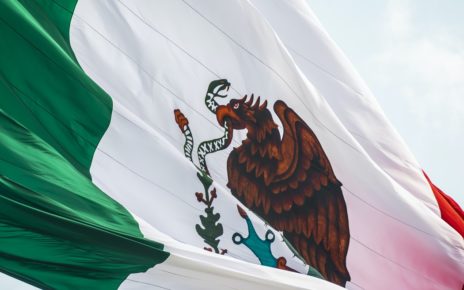[ad_1]
It takes patience, careful research and sometimes a little luck to get anywhere in the world by 2021. Travel across borders now comes with the need to be entirely up to date on the COVID-19 requirements of both the country you’re leaving and your destination.
Latin America is no different. With multiple variants, fluctuating case numbers, and the easing or tightening of restrictions all on the cards, it’s important to keep track of the landscape if you’re planning a trip. Here’s a country by country breakdown of travel requirements and lockdowns.
Mexico
Mexico is one of the countries that has been most flexible with COVID-19 restrictions during the pandemic. Entry to Mexico doesn’t require a negative PCR test or proof of vaccination. All you’ll need to do is fill out a questionnaire and an immigration form and you’re good to go.
Mexico uses a federal traffic signal approach to restricting and curtailing travel in Mexico. This means that each state can decide the level of restriction it believes necessary. Green means business as usual, yellow suggests there’s a low risk, orange signals medium, and red is the maximum. The four-tiered system, which is updated two times per month, does not include any red states as of September 2021. Mexico City is all yellow. Quintana Roo, Mexico City and Oaxaca can all be used for economic or labor activities, though restrictions may apply.
Mexico’s third virus wave is now over. However, the number of cases has been less than August. Given the country’s stance on travel so far, it’s safe to say that booking a trip to Mexico is likely to come without too many bureaucratic hoops to jump through.
Costa Rica
Proof of a negative COVID-19 test isn’t necessary when entering Costa Rica, but all travelers have to complete an epidemiological Health PassTo gain entry, you must be present within 72 hours after your arrival. Tourists who have been fully vaccinated (those who received the last dose within 14 days of arriving in Costa Rica) do not need to show proof that they have health insurance. However, proof must be presented of proof of their full vaccination.
Non-vaccinated individuals must present proof that they have comprehensive insurance to pay for any COVID-19-related costs during their entire stay in Costa Rica. It covers quarantine costs up to US$2,000 and COVID-19 related medical expenses up to US$50,000.
Things aren’t totally back to normal in this pura vida haven, as national parks are only operating at 50% capacity, all businesses (including bars and restaurants) must close at 11pm and there’s an imposed curfew from 11pm to 5am every night. The driving ban applies from 9pm to 5am, while beaches remain open only from 5am-6pm. There’s definitely a lot still to be enjoyed in Costa Rica but this Central American nation is still recovering from its second wave of cases.
Panama
Anyone entering Panama must complete an electronic sworn affidavit before check-in. The only requirement for vaccinated travelers is to not provide negative results or quarantine upon arrival. However, proof that they have received full vaccinations must be presented at least 14 days prior to arriving in Panama.
Travelers who are not vaccinated must show proof within 72 hours that they have passed a negative antigen or PCR test before traveling to Panama. For those who are not from the United States or other countries high-risk countriesThe following countries, which include the UK, Greece and Costa Rica, Israel, South Africa and Costa Rica, must also quarantine for 72 hour, regardless of whether their test results were negative. They will need to take another test 72 hours after they arrive in the country. If that result is negative, quarantine will no longer be necessary (if it’s positive, a 14-day quarantine at a government approved hotel awaits).
In some areas of Panama, there’s a nightly curfew from 1am to 4am.

Dominican Republic
Proof of a negative PCR test isn’t necessary for entry to the Dominican Republic from countries not deemed to be high risk, but COVID-19 rapid tests are being performed on a random selection of individuals on arrival. Anybody who is positive for PCR will be required to take quarantine in a designated location by the national authorities.
Travelers arriving from high-risk countries (e.g., Australia, Brazil and India), as well as Senegal and South Africa will need to show proof of a positive PCR test. These travelers can present proof that they have been fully vaccinated and had their last dose no later than 3 weeks prior to arriving in the Dominican Republic.
There are currently restrictions on some tourism activitiesYou can find out more. Visit national parks and protected areas between 8 am and 5 pm during weekdays, and from 8 am to 4pm on weekends. National parks can only accommodate 100 people per night. Visitors to protected areas should be accompanied with a local expert.
Colombia
Colombian citizens are allowed to enter the country without restriction.
It’s not necessary for anyone to present proof of a negative PCR or antigen test to enter Colombia, but all travelers must fill out the obligatory Check-Mig formYou should leave between one and 24 hours before your departure. This will generate an email that you’ll need to show at immigration on arrival.
It’s obligatory to wear face masks and observe social distancing measures throughout Colombia. There’s currently a daily curfew in the coastal city of Cartagena between 2am and 5am, which will remain in place until December 1, 2021. The beaches are accessible daily between 8am and 6pm.
Venezuela
Anybody entering Venezuela will need to show proof that they have passed a negative PCR test within 48 hours. No matter what vaccination status, all travelers will need to undergo a second PCR test on entry into Venezuela. An official service provider, as determined by the local health authorities will conduct this test. The second test is $60 USD, and payment must be made in cash
Anybody leaving Venezuela may be subject to a medical evaluation at the point of departure. This includes checking temperature and potential symptoms. Anyone who shows signs of COVID-19 symptoms won’t be allowed to leave the country for onward travel.
Venezuela began commercial flights to Mexico in January 2021. There’s also currently a scheme in place known as “7×7,” which allows for one week of more flexible lockdown measures, followed by a week of strict quarantine, largely due to concerns about the prevalence of the Brazilian variant of COVID-19.
Argentina
Argentina plans to open its borders to all fully vaccinated tourists starting on November 1, 2021. The proof of having been vaccinated must be provided by fully-vaccinated travelers. This is valid for 72 hours. An additional antigen test can then be done 7 days after arriving. Provided fully vaccinated travelers follow these measures (and don’t show any symptoms), quarantine won’t be necessary.
Unvaccinated travelers will also need to provide proof of a negative PCR test taken no more than 72 hours before travel as well as the second test after 7 days, but a week of quarantine upon arrival will be mandatory if they aren’t fully vaccinated.
The full opening of restaurants, bars, cafes and cultural attractions is planned for November 2021. However, nightclubs will only be able to open at 50% capacity. The use of masks outdoors will not be possible, however they are still required indoors as well as on public transport. The country has taken it slowly and steadily, although Argentina has noticed a drop in its cases.

Chile
Chile has now opened its doors to all fully vaccinated tourists after closing its borders twice due to the pandemic. From November 1, 2021, fully vaccinated travelers can enter the country without having to undergo the 5-day quarantine that’s currently required.
It will be required to prove that a negative PCR test was performed within 72 hours after travel. fill out a medical questionnaireYou must provide proof that you have medical coverage up to US$30,000 and not less than 48 hours prior to your flight. Chilean officials will need to be contacted for 14 days by travelers. Each day, a form with follow up information is sent electronically.
Chile, which was in a state emergency from September 2021 to September 2021 is slowly lifting its restrictions through five stages. If you’re considering traveling to Chile for tourism, it’s best to plan to arrive after November 1, 2021.
Brazil
Brazilian nationals who are entering Brazil via air need to show evidence of either a negative antigen test or a PCR test that was taken less than 72 hours prior to boarding. You must present the test results in English, Spanish, and Portuguese.
The only exception is for children younger than 12 to travel with an adult with proof that they have passed a negative PCR test. Brazil requires all travelers to fill out an application. health declaration formWithin 72 hours after boarding.
There are no restrictions on travel within the region and there is no restriction to entry. But land borders can be closed to Brazilian permanent residents or foreign workers. Close relatives of Brazilian citizens are not allowed to enter Brazil.
Peru
Peru has declared a COVID-19 national health emergency through October 31, 2021. Foreign travelers are welcome to visit Peru. All must have a positive PCR test within 72 hours. A form must be filled out by all travellers. affidavit of healthBefore you enter Peru.
Currently, any non-Peruvian nationals who’ve been in South Africa in the last 14 days are prohibited from entering Peru. Peruvian citizens and permanent residents who’ve been in South Africa (even for transit) in the last 14 days must quarantine at home for 14 days upon arrival to Peru.
Right now, there’s a national nightly curfew in place from 1am to 4am. Many restaurants and tourist attractions like Machu Picchu or the Inca Trail are currently open, but only a small number of people can use them.
While travel definitely isn’t as straightforward as it was pre-pandemic, it’s still possible to travel to, from and within Latin America. Careful planning of each step of your journey and close monitoring of each country’s restrictions is best advised given that in this day and age, rules and restrictions can change at a moment’s notice. However, there are promising signs that vaccination programs are improving and the number of cases is decreasing in this vibrant and beautiful region.

Laura Field lives in Colombia and is a journalist.
[ad_2]




